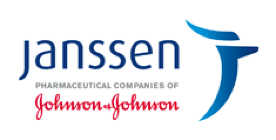
T cells (blue/orange) are the conductors of the orchestra that is the immune system.
“T cells are one of the major arms of the adaptive immune system, which allows our bodies to respond to threats in a highly tailored way,” says David Lee, global immunology therapeutic area head at the Janssen Pharmaceutical Companies of Johnson & Johnson. “They are the conductors of the orchestra — they play a central role in regulating and amplifying other parts of the immune system.”
Although T cell-mediated immunity is fundamental for protecting the body against disease, T cell dysfunction also plays a well-established role in several illnesses.
“If you broadly suppress T cell function, you end up being unable to fight infections or cancer,” says Navin Rao, senior scientific director of immunology discovery at Janssen. “On the other hand, if you’re not regulating the system appropriately, you can end up with autoimmune diseases, such as multiple sclerosis, type 1 diabetes, rheumatoid arthritis or inflammatory bowel disease.”
Modulate, not block
In recent years, a variety of revolutionary T cell therapeutics have come online that boost the immune response against tumours and infection, or dampen it to counter autoimmunity. While these medications have been transformational, they aren’t curative — and the beneficial effects of treatment typically don’t last forever.
“For many patients, their disease will continue to have an enormous impact on their daily lives,” says Rao. “We envision a future where the vast majority of patients achieve complete remission.”
A promising new therapeutic strategy is to focus on mobilizing the natural regulatory mechanisms that help maintain balance in the immune system.
“The existing tools we have are on/off switches, but what we need are ‘dimmer switches’ that provide more nuanced, fine-tuned control,” says Rao. “It’s a shift away from immune suppression and towards immune homeostasis.”
To advance these next-generation approaches, leaders in the field are now focused on enhancing the two main ways the immune system regulates itself: engaging coinhibitory receptors, and targeting regulatory T cells, or Tregs, for expansion.
Triggering checkpoint coinhibitory receptors, which are often upregulated on activated T cells, serves to dampen the level of T-cell activation and functions as a ‘natural brake’ for T cells during immune responses.
Such an approach is particularly promising in the context of autoimmunity, where self-reactive T cells are chronically activated. In these conditions, the ultimate aim is to be able to fine-tune control such that treatment selectively enhances this natural brake to hold T-cell responses in check without compromising their ability to mount a response to infections and cancer.
Other regulatory methods include selectively enhancing Treg IL-2 signalling1 and engineering antigen-specific cellular therapies, such as chimeric antigen receptor (CAR) Tregs2. Scientists recently observed how targeting the inverse responses for checkpoints, and non-selective IL-2 in oncology, results in immune-mediated adverse events, further supporting this approach3.
Remission is the mission
Dissecting the mechanisms involved in regulating the immune response is the first step towards unleashing the promise of these advanced T-cell therapeutics.
“By definition, these are much smaller modulations of the immune system and so it’s much more challenging to understand than the activation state,” says Rao.
Recent advances in technologies, such as single-cell multiomics and imaging, are providing new opportunities to probe immune cell function in more detail than ever before, maximizing the chance of successfully translating this knowledge into therapeutics that can provide long-lasting benefits for patients.
“We now have a line of sight for achieving the big aspiration of restoring health for those affected with immune-mediated diseases. It’s good when some patients feel better, but it’s better when all patients feel good,” concludes Lee. “That’s why we see remission as our mission.”


